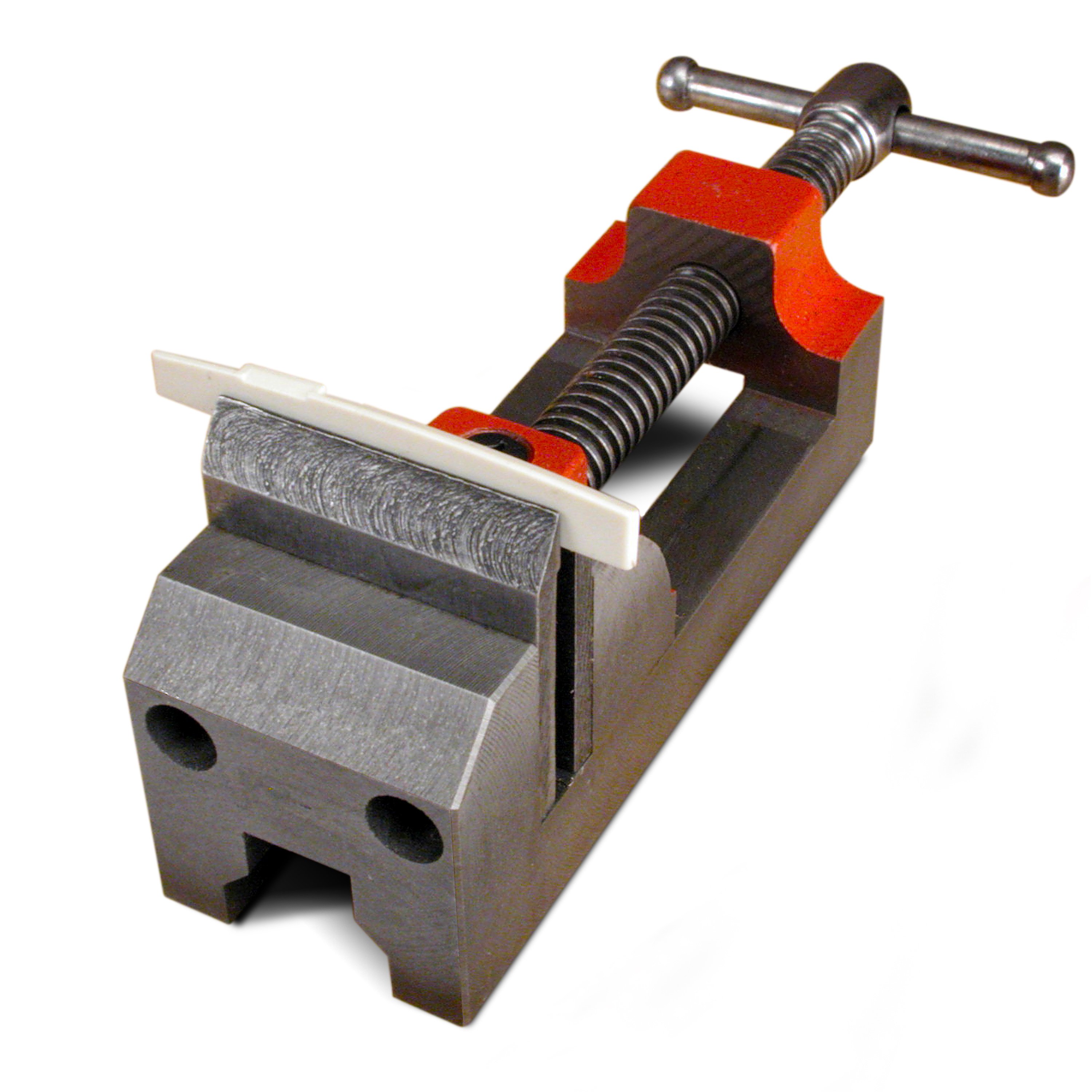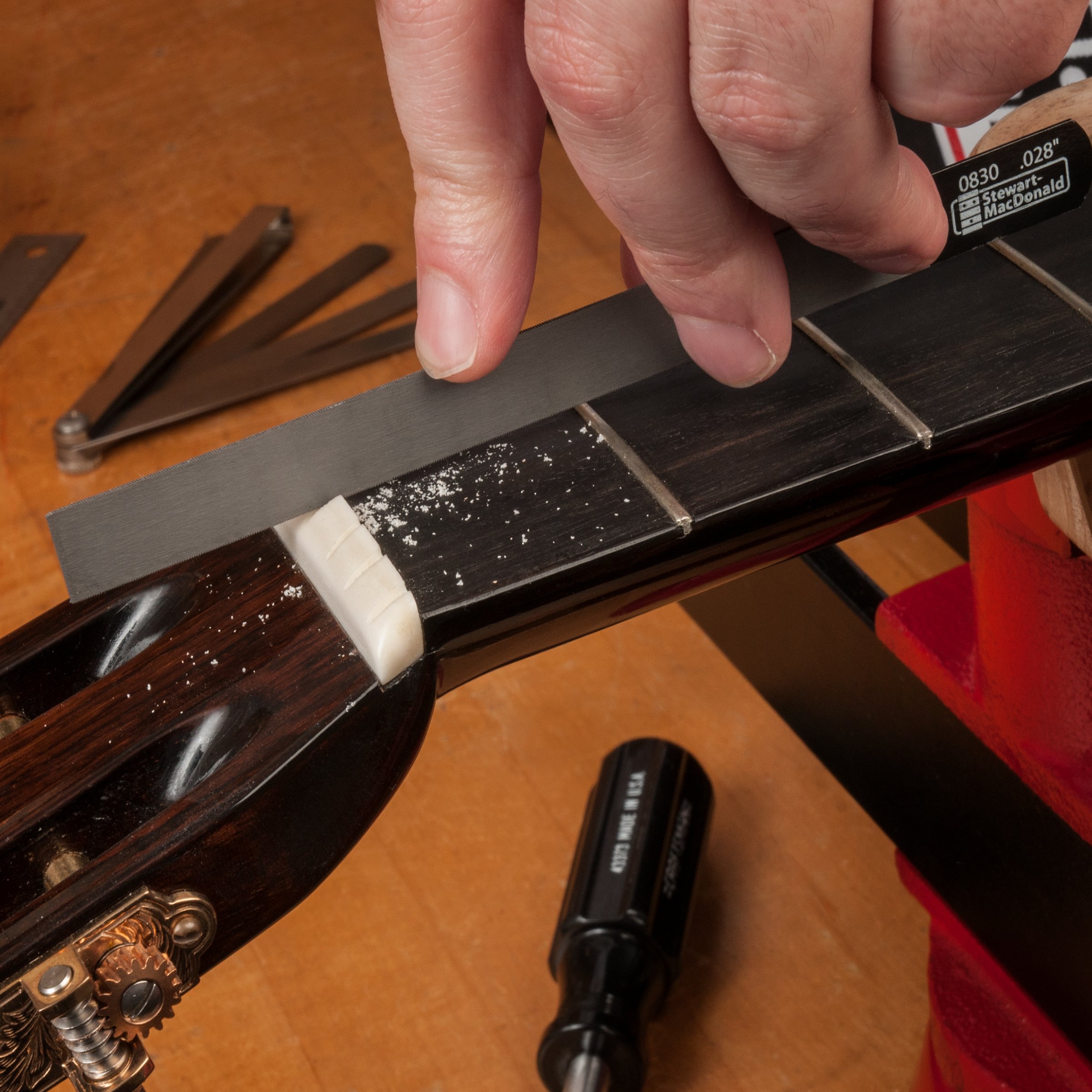Two tips for filing string slots at the nut
Issue 233 January 01, 2015
High action and a badly shaped nut: That’s the situation with the nut on this old May Bell guitar. Dan Erlewine lowers the nut slots while also “back filing” the nut so the strings angle down properly to the tuners.
About the guitar in this video: This old May Bell guitar has a “mother of toilet seat” pickguard and fingerboard. This model was made by Regal in 1935 and distributed by Slingerland. In the case with it was a metal raised nut to be placed over the string nut, presumably for playing Hawaiian lap-steel style.
- Problem 1: the strings are too high
- Problem 2: the string slots aren’t filed properly
- Setting the “take off point” for each string
- Removing the nut for filing
Video Transcription
[on-screen text reads: Stewart MacDonald Trade Secrets!]
Dan Erlewine: This old guitar has two problems that I'm going to solve today [on-screen text reads: Two tips for nut filing - Dan Erlewine Stewart-MacDonald]. And they're both at the nut. Problem one is that the strings are too high [on-screen text reads: strings too high at the nut]. I can bring them down where they're more comfortable. The second problem is that they're not really filed properly [on-screen text reads: slots need to be reshaped]. These strings are coming up to the back of the nut and sort of laying on the top. They're not ramping off the front edge like you want them to. So you have a clean takeoff point at the front of the nut.
Back filing the string slots
If I pick up this D string [on-screen text reads: String Lifter], for example, and lift up on it, I can see a gap instantly under the very front edge. It's hardly touching there at all. It's touching back here. And I want every string's takeoff point to be clean in uniform right here at the front edge. To do that, I will back file all these string slots. So they ramp to the front edge evenly and take off at the front. I can see that this nut is off center and it's glued in there. So I'm going to tap it loose and work on it, off the guitar, using the Nut and Saddle Vice. I can actually do the work a lot easier that way. And then later I'll glue it back in right.
First, I'll take a little of the material off the top of the nut and get to some clean material so I can see better [on-screen text reads: Nut and Saddle Vise]. And then what I'm going to do is put pencil lead in these slots and only back file. I'm going to take off the backside of each slot until I see the pencil lead laying only in the front of the groove [on-screen text reads: Nut and Saddle Shaping File. And that's my takeoff point.
Reshaping the slots
You can see the black disappearing [on-screen text reads: Gauged Nut Slotting File]. I'm staying off the front as much as possible, and I'm stroking it and going around with it to create a general ramp. That rolling motion is keeping the ramp open on the back and that's good. You don't need all that back there. You want the string to be free to ramp.
When I only have pencil lead at the front of the slot, that's the time to pop this nut back in there and see where my action is. Now the bone's back in place, it's not glued it's just slid side to side lined up, and now I'm going to be very careful about dropping the string height and back filing at the same time. Take some meat off again on the back, come up to the front edge and check the string height. You'll do each string a few times till you get there. Really I'm just after the feeling that I like. There we go, it's a nut clean up in two easy steps. I've got the back filing that I wanted. I've lowered the strings a tad and they feel better. I glued it in with two drops of tight bond, and I'm going to let it sit with the strings, holding it in place till it dries. And I'll have a great playing guitar.






